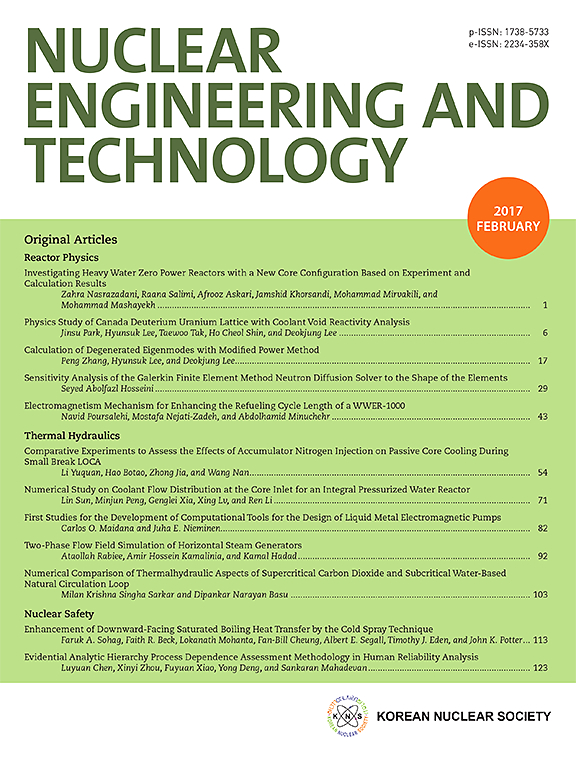Development and performance analysis of a PIPS-based detection system for ultra-low Strontium-90 measurement in seawater
IF 2.6
3区 工程技术
Q1 NUCLEAR SCIENCE & TECHNOLOGY
引用次数: 0
Abstract
Strontium-90 (Sr-90) is a key radionuclide for monitoring because of its origin, physicochemical properties, and potential harm to human health. This radionuclide moves with seawater because of its high solubility and is found at trace levels, typically below 1 mBq/kg. Therefore, chemical pretreatment and a highly sensitive detection system are necessary to analyze the concentration of Sr-90 in seawater. In this study, we propose a prototype system based on a passivated implanted planar silicon (PIPS) detector to achieve a minimum detectable activity (MDA) comparable to conventional devices while enhancing user convenience. Finally, both passive and active shielding methods were applied to minimize background radiation contributions. The experimental results showed that the background count rate decreased to approximately one-tenth of its original value, with a count rate of roughly 3.50 cpm for the blank sample. Subsequently, the detection efficiency was optimized by determining the sample shape and detector size, resulting in an estimated value of 51.2 ± 2.7 %. The theoretically calculated MDA was 0.77 mBq/kg for a 1-h measurement and 0.31 mBq/kg for a 6-h measurement, demonstrating the system's applicability for marine radioactivity analysis.
基于pips的海水超低锶-90检测系统研制及性能分析
锶-90 (Sr-90)由于其来源、理化性质和对人体健康的潜在危害而成为监测的关键放射性核素。这种放射性核素由于其高溶解度而随海水移动,其痕量水平通常低于1 mBq/kg。因此,需要化学预处理和高灵敏度的检测系统来分析海水中Sr-90的浓度。在这项研究中,我们提出了一个基于钝化植入平面硅(PIPS)探测器的原型系统,以实现与传统设备相当的最小可检测活性(MDA),同时增强用户便利性。最后,采用被动和主动屏蔽方法来最小化背景辐射的贡献。实验结果表明,背景计数率下降到原值的十分之一左右,空白样品的计数率约为3.50 cpm。随后,通过确定样品形状和探测器尺寸对检测效率进行优化,其估定值为51.2±2.7%。理论计算的MDA在1小时的测量值为0.77 mBq/kg,在6小时的测量值为0.31 mBq/kg,证明了该系统在海洋放射性分析中的适用性。
本文章由计算机程序翻译,如有差异,请以英文原文为准。
求助全文
约1分钟内获得全文
求助全文
来源期刊

Nuclear Engineering and Technology
工程技术-核科学技术
CiteScore
4.80
自引率
7.40%
发文量
431
审稿时长
3.5 months
期刊介绍:
Nuclear Engineering and Technology (NET), an international journal of the Korean Nuclear Society (KNS), publishes peer-reviewed papers on original research, ideas and developments in all areas of the field of nuclear science and technology. NET bimonthly publishes original articles, reviews, and technical notes. The journal is listed in the Science Citation Index Expanded (SCIE) of Thomson Reuters.
NET covers all fields for peaceful utilization of nuclear energy and radiation as follows:
1) Reactor Physics
2) Thermal Hydraulics
3) Nuclear Safety
4) Nuclear I&C
5) Nuclear Physics, Fusion, and Laser Technology
6) Nuclear Fuel Cycle and Radioactive Waste Management
7) Nuclear Fuel and Reactor Materials
8) Radiation Application
9) Radiation Protection
10) Nuclear Structural Analysis and Plant Management & Maintenance
11) Nuclear Policy, Economics, and Human Resource Development
 求助内容:
求助内容: 应助结果提醒方式:
应助结果提醒方式:


